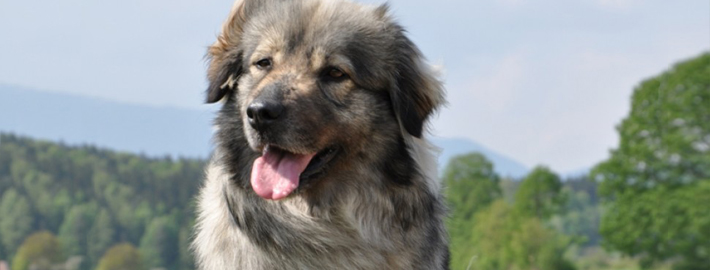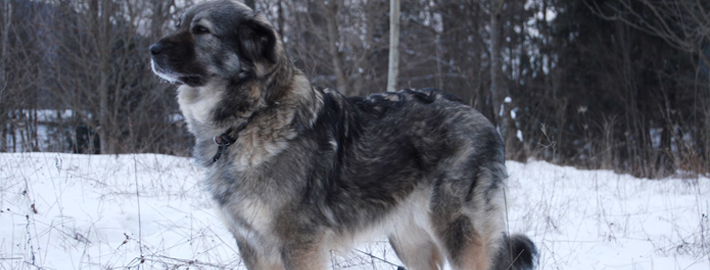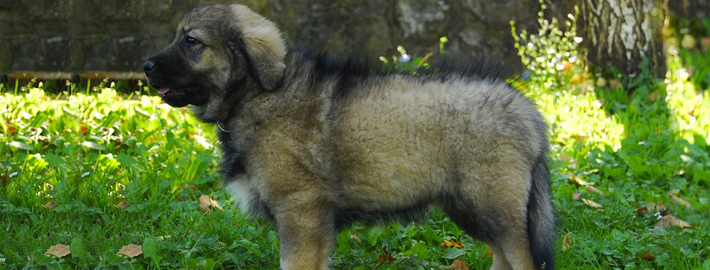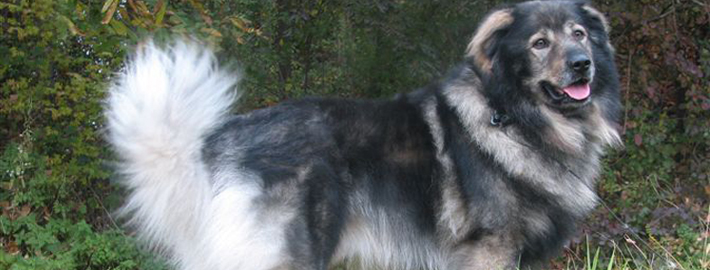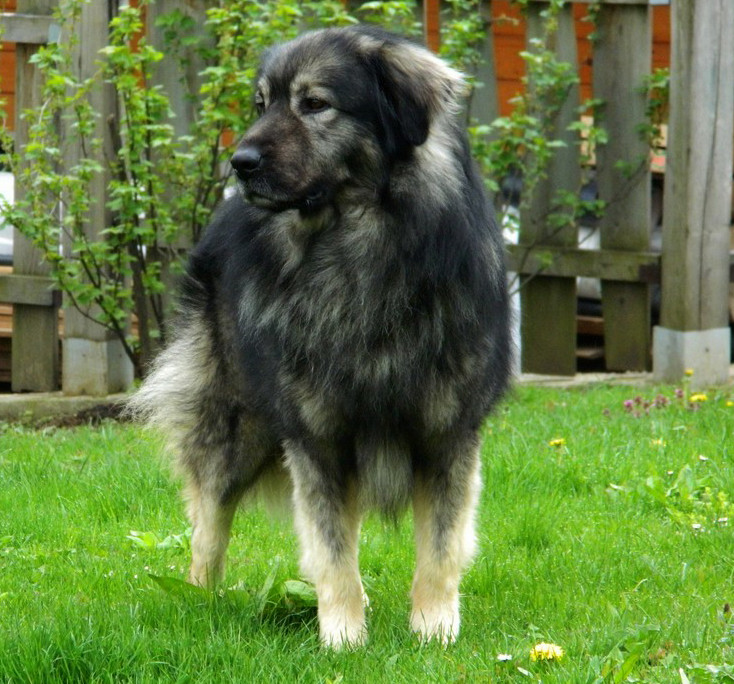What makes the Karst Shepherd Unique?
The Karst Shepherd Dog is an average-sized guarding and herding breed, which was created in Slovenia centuries ago. This dog is known for its fearless nature and serious approach to its original duties of guarding and handling sheep. It’s valued not only for its quite memorable appearance but also for its remarkably pleasant and biddable disposition, which allows it to play the role of a supreme family pet.
Breed Groups
Page Contents
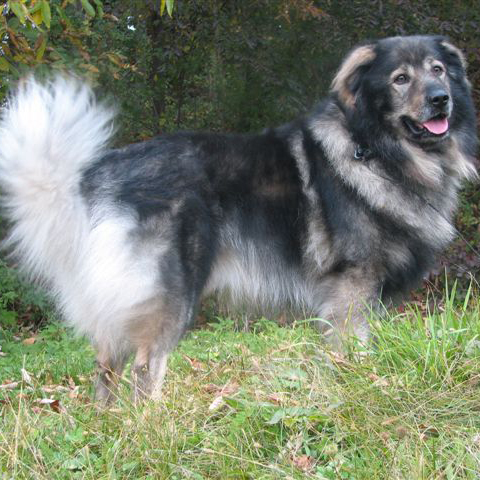
SnapShot
| Size: | Males – 57 to 63 cm (22 to 25 inches) Females – 54 to 60 cm (21 to 24 inches) |
| Weight: | Males – 26 to 40 kg (58 to 88 pounds) Females – 26 to 40 kg (58 to 88 pounds) |
| Origin: | Slovenia |
| Life Span: | 11 – 12 Years |
| Colour: | Iron Grey with a Light Grey, Sandy or Pale Fawn colour, with a dark dark mask on the muzzle |
| Litter Size: |
Is the Karst Shepherd Right For You?
The Karst Shepherd is bred to be a guard dog and it shows just the right temperament to be an excellent protector of its flock, family and possessions. The dog is brave, independent, prudent and reliable. It is distrustful and wary of strangers and can be territorial towards unfamiliar dogs. It is an excellent guardian of the sheep that will work tirelessly to make sure that its flock is safe and sound from predators. As a family pet, the dog is very loyal and devoted to its master. It gets along well with children and other dogs and pets specially if raised with them from puppyhood. It forms an strong bond with its human family, making a very loving and devoted family pet.
In 5 Words
- Sharp
- Independent
- Obedient
- Reliable
- Intelligent
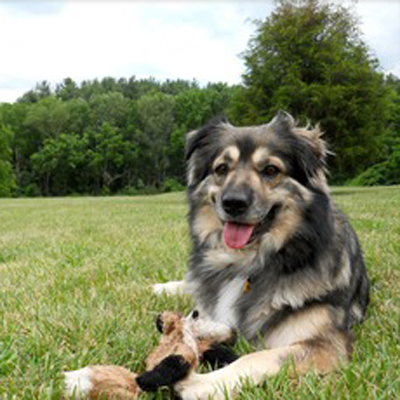
Characteristics
Learn About the Karst Shepherd
Description
General Description
The Karst Shepherd is a medium-sized, compactly built sheepdog, with a long haired, double coat. The hair comes in different shades of grey, from iron to silver to very dark. Those with darker coats will have a lighter color on the legs. The hair is short on the head and on the front of the legs, and long and thick over the rest of the body, with a mane at the next, a flag tail, and feathering on the hind legs. The hair lies flat along the rest of the body. The Karst has almond-shaped, dark brown eyes, framed by long ears that lie flat against the skull. The face is masked.
Size
The Karst Shepherd Dog is of medium size, harmonious, robust, endowed with a well-developed musculature and a strong constitution. The tail and ears are hanging. Length of body in proportion to height at withers should be no less than 9 : 8. Skull is a little longer (13 to 14 cm) than the muzzle (11 to 12 cm / 4.3 to 4.7 in). Width of skull (13 to 14 cm / 5.2 to 5.5 in) is equal to its length.
Coat
Their hair is well furnished, long, flat, with abundant undercoat. The head the front edges of the ears and the front part of the legs covered with short hair. The back edge of the ears has longer and more supple hair. In its upper region, the neck has long hair, stiff and very bushy forming a mane; in its lower part, the hair is longer and more supple forming a ruff which is wider at the set of the neck. The trunk and belly have long hair which becomes less hard on the belly. The tail regularly bushy, does not form a plume. On the back side of the forequarters, the long hair is very supple forming fringes. On the back side of the hindquarters, the hair is even longer and bushy forming culottes. The length of the top coat is at least 10 centimetres (3.9 in).
Coat is iron grey; especially on the back, a dark shade is preferred; towards the belly and the limbs, the colour turns without visible transition to a light grey or sandy colour, with a dark streak on the front parts of the limbs. The dark mask on the muzzle spreads on to the skull. On the back part of the head it is bordered with grey or sandy or pale fawn hair overlaid with black.
Short History of the Karst Shepherd
The Karst Shepherd is a Slovenian natural treasure and the oldest indigenous breed. It was internationally recognized in 1939 as the Illyrian Shepherd and then again under the current name of “Krasevec” in 1968. The breed is several centuries old and has been used as the sheepdog in the Slovenian Karst area mainly around Pivka. The ancestors of the Karst Shepherd were described by internationally renowned explorer Prof. Strebel as a link between the Greek Molos and the German Shepherd. He mentions the possibility of a Latin origin via the Pompeii dog. However, it is more likely that it was brought to the Karst area by the Illyrians with their sheep herds via the Dalmatian islands and Istra. The Greek Molos interbred with other sheepdog breeds in the wider area, such as the Caucasian and Romanian sheepdogs or the Macedonian sheepdog or Sarplaninec. The Karst Shepherd has long been regarded as a good flock guard and remains so even today when, like most working dogs, it is more of a companion and friendly family member. The fact that over 100 Karst Shepherds have won one or several titles as nominees, national or international champions, and that 50 have passed the service dog exams testifies that the Karst Shepherd is an established and quality breed. Together with the four breeds of hounds, the Karst Shepherd is part of a rich natural and national heritage and dog-breeding tradition, which in 2005 was celebrating its 76th anniversary of organized operation in the Slovenian Kennel Club.
Temperament
The Karst Shepherd is a reliable and highly capable working breed, which is also highly appreciated for its gentle, devoted and docile nature. It will make a lovable companion dog for families who won’t be scared away by its extensive exercise requirements. This dog suits families with children as well-brought-up specimen will always handle them with essential patience and care. Proper socialisation is an outmost importance for the puppy of the Karst Shepherd if you plan to keep it as a household pet.
This friendly dog is usually well-behaved when it comes across unfamiliar people although it always stays on alert. The Karst Shepherd is extremely protective of its human family and will lay down its life without second thought for the sake of people it loves. As a rule it’s highly successful in the role of a guard dog. It can also make a very capable watchdog, which will reliably warn its master about any suspicious person in the vicinity of its subordinated territory.
Caring for Your Karst Shepherd
Grooming & Bathing
The longish coat of this breed is easy to take care of with weekly brushing. Bathing is needed only when necessary.
Exercise & Training
This breed of dog is best suited to a family with lots of space surrounding the home. It should be taken on daily, long, brisk walk or jog. While out on the walk the dog must be made to heel beside or behind the person holding the lead, as in a dog’s mind the leader leads the way, and that leader needs to be the human.

